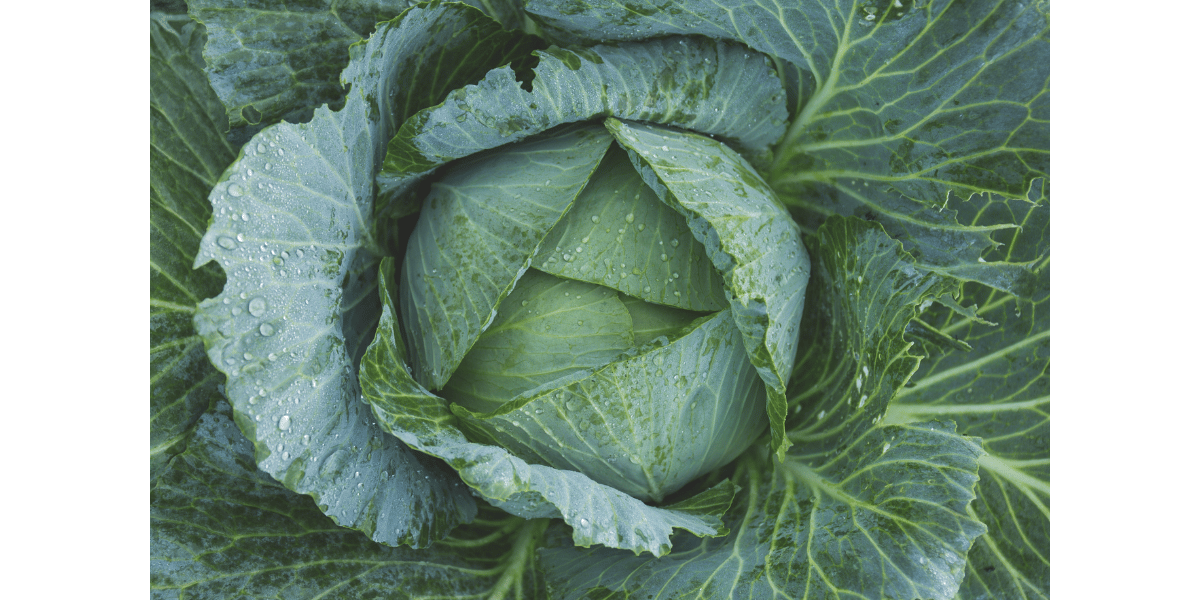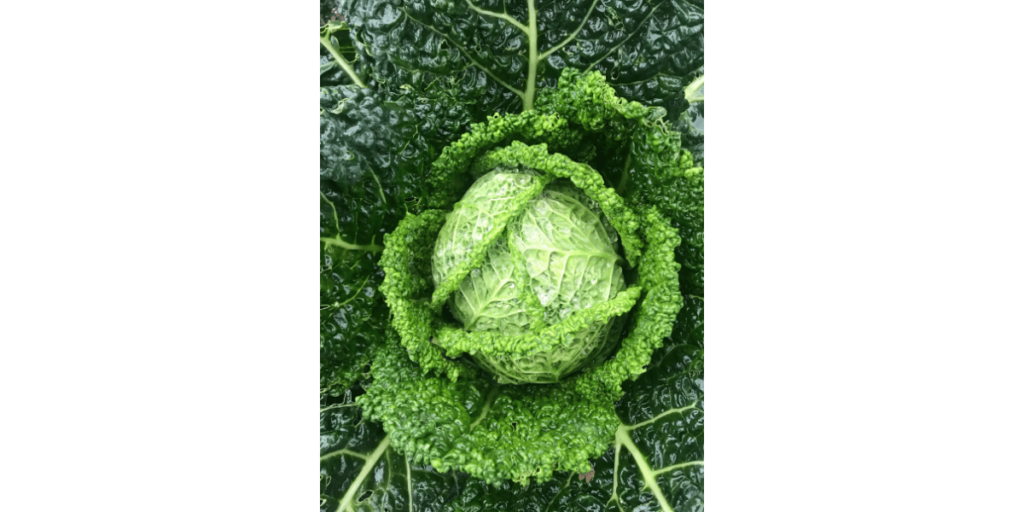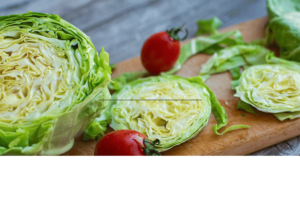The Health Benefits of Eating Cabbage in South Africa

This is your guide to the health benefits of eating cabbage in South Africa.
But before we continue
What is your memory of cabbage? Is it its odour? Or does it remind you of cabbage patch dolls?
But it would be best to ask what cabbage does to your body. Are there any health benefits of cabbage?
Before we discuss cabbage’s benefits, let’s examine its origins.
Cabbage and its Origin
The cabbage’s scientific name is Brassica oleracea. Cabbage is a part of the cruciferous vegetable family.
It is of the same family as broccoli, cauliflower, kale, Bok choy, and Brussels sprout. This family belong to the same Brassica plant species.
The Romans and Celts used cabbage in the Mediterranean in the early centuries. They use it as a tonic.
Cabbage broth is beneficial for various ailments, including cancer. It also alleviates diarrhoea, ulcers, gout, and headaches.
Types of Cabbage

Besides the green and red cabbage, there are several varieties. They include Savoy and Chinese cabbage.
Green Cabbage

Unsplash: Natasha Skov
Most people are familiar with this type of cabbage. It is green, pale green, and even almost white. Its tightly packed leaves have prominent veins and appear almost waxy on the outside.
Green cabbage has a mustardy flavour. When cooked, it tends to become sweeter and milder. You can also serve it raw.
Green cabbage has a larger head than other types. Varieties include Cannonball, Early Jersey Wakefield, King Cole, and Early Flat Dutch.
Savoy Cabbage

Pexels: John Riches
Savoy cabbage is darker green and has a milder, sweeter flavour. Its leaves are less compact than those of green cabbage.
It derives its name from the Savoy region in France, which is located in the Western Alps, along the border with Italy and Switzerland.
Savoy cabbage varieties include Savoy King, Tundra, Winter King, Tardivo di Milano, Des Vertus, Ormskirk, and Savoy Ace.
Red Cabbage

Pexels: Ron Lach
The red cabbage has a dark reddish-purple colour tinged with white veins. After cooking, it is also known as Blaukraut. The red cabbage mimics a pigment that belongs to anthocyanins.
Red cabbage has dense, waxy leaves and a mildly bitter or peppery flavour. It also holds less water than other types of cabbage and is richer in nutrients than other types. Its dark colour indicates that it’s full of phytochemicals and antioxidants.
Red cabbage varieties include Red Meteor, Ruby Ball, and Red Drumhead.
Chinese Cabbage

Pexels: Laker
Chinese cabbage grows into an oblong shape rather than the round heads of other varieties. It has thick stems and oval-shaped leaves frilling out toward the edges. Chinese cabbage is better eaten cooked. Chinese types include Napa and Baby Choi Sum.
Cabbage Nutrition Facts
It is suitable for you because it is nutrient-dense. Cabbage is also a hydrating food.
Most varieties of cabbage are good sources of potassium, folate, Vitamin K, riboflavin, and iron. Cabbage’s calories are low and high in fibre.
The nutritional value of cabbage in one cup raw chopped.
- Calories 22
- Protein 1.14 g
- Fiber 2.22 g
- Calcium 35.6 mg
- Potassium 151 mg
Nutritional Facts of cooked cabbage, one cup boiled contains:
- 34 calories
- 95g protein
- 1.42g fibre
- 36mg calcium
- 147mg potassium
Notably, many phytochemicals are abundant in cruciferous vegetables like cabbage. Other cabbage phytochemicals include flavonoids, indoles, ascorbic acid, carotenes, and tocopherol.
Another compound in cabbage is choline, which is more challenging in plant foods.
Choline is an essential nutrient. It is vital for healthy cells, metabolism, memory, mood, brain function, and muscle control.
Other varieties of cabbage contain compounds called glucosinolates. Glucosinolates are precursors to sulforaphane, a bioactive compound in cruciferous vegetables responsible for many health benefits.
Sulfuraphane and other sulfur-containing compounds in cabbage give it its unique smell. However, the health benefits you receive from sulforaphane outweigh the scent.
Health Benefits of Cabbage
Here are evidence-based health benefits if you have been shunning away from eating and enjoying cabbage.
Cabbage and Cancer Prevention
Sulphoraphane is a cancer-fighting compound found in cabbage.
Over the past three decades, research has shown that cruciferous vegetables lower cancer risk.
Researchers have pinpointed the sulfur-containing compound sulforaphane. It gives cruciferous vegetables their bitter taste and cancer-fighting power.
Researchers have discovered that sulforaphane can inhibit the harmful enzyme histone deacetylase (HDAC).
This enzyme plays a role in the progression of cancer cells.
Red cabbage contains the powerful antioxidant anthocyanin. It gives colour to other red and purple fruits and vegetables their vibrant colours.
In the lab, anthocyanins slow cancer cell proliferation. They also kill already-formed cancer cells and stop the formation of new tumours.
Cabbage contains a compound called Indole-3-carbinol (I3C) that helps in cancer prevention.
Researchers implemented a 2021 case-control study among Polish-born migrant women in the United States. The study found that higher consumption of total and raw, lightly cooked cabbage lowers the risk of breast cancer.
Eating Cabbage Supports Liver Health
Research on cabbage suggests that it supports the liver. It may even help counter liver diseases by reversing oxidative damage.
An Animal Study published in Oxidative Medicine and Cellular Longevity observed that eating red cabbage for two months could reduce oxidative damage. Eating red cabbage also helps widen arteries.
Cabbage contains Vitamin C and sulfur, which help remove toxins such as free radicals and uric acid from the body.
Cabbage juice contains Indole-3-Carbinol antioxidants. This antioxidant plays a vital role in detoxifying the liver.
The Journal Hepatology published research stating that “indole,” a natural compound in cruciferous vegetables, effectively prevents fatty liver disease.
Eating Cabbage Helps Improve Digestion
Fibre-rich cabbage helps to improve your digestive health.
Cabbage is full of gut-friendly insoluble fibre, a carbohydrate that does not dissolve easily in the intestines.
Insoluble fibre removes waste and promotes bowel regularity. Soluble fibre provides fuel for friendly bacteria.
Like kimchi and sauerkraut, fermented cabbages abound with anti-inflammatory and immune-supportive nutrients.
Promoting your good gut bacteria with fermented foods benefits your health. It protects against a plethora of chronic diseases. Brassica vegetables, like cabbage, tend to provide significant benefits to the gut microbiome.
Keep your digestive system healthy by adding cabbage to your diet.
Cabbage is Good for Your Heart
According to a 2021 study published in the British Journal of Nutrition, older women over age 74 who ate more cruciferous vegetables reduced abdominal aortic calcification by 46 percent. Aortic calcification can be a predictor of future cardiovascular events.
The study further concluded that eating more cruciferous vegetables can protect against calcium build-up and ultimately benefit heart disease.
Cabbage, particularly red cabbage, seems to raise levels of beta-carotene, lutein, and other heart-protective antioxidants. It also assists in lowering “oxidized” LDL, which is linked to the hardening of the arteries. As these antioxidants ease inflammation, they can help prevent heart disease.
A report in the American Journal of Clinical Nutrition linked the intake of flavonoid-rich foods with a reduction in cardiovascular disease deaths.
Evidence has shown that cabbage’s high polyphenol content reduces the risk of cardiovascular disease. Polyphenols in cabbage prevent platelet build-up and lower blood pressure.
Eating Cabbage Helps Manage Diabetes
Cruciferous vegetables like cabbage are an excellent choice for those affected by diabetes. Cabbage has a high fibre content and contains glucosinolates.
Glucosinolates are chemical compounds that combat oxidative stress and inflammation.
Eating cabbage may also help improve blood sugar regulation.
Cabbage’s Anti-inflammatory Effects
Inflammation is good for you as it protects your body from injury and infection.
However, chronic inflammation over time is associated with many diseases.
Cabbage contains many different antioxidants that reduce inflammation.
Antioxidants such as sulforaphane and kaempferol are likely responsible for their anti-inflammatory effect.
Adverse Effects of Cabbage
Flatulence
Cabbage contains significant quantities of raffinose, an indigestible sugar. Raffinose is an oligosaccharide that may trigger gas, bloating, and other somewhat annoying gastrointestinal symptoms.
Raffinose is unique because humans lack the enzyme α-GAL necessary to break it down. Instead, gas-producing bacteria ferment raffinose in the lower intestine with the α-GAL enzyme.
The process produces carbon dioxide, methane, and hydrogen, leading to flatulence.
However, don’t let this discourage you from eating cabbage. Raffinose is a beneficial compound that acts as a prebiotic, feeding good gut bacteria.
Other symptoms associated with flatulence occurring after eating cabbage include belching, abdominal discomfort, and bloating.
Hypothyroidism
Cabbage also contains other compounds called goitrogens, found in other cruciferous vegetables.
These naturally occurring phytochemicals disrupt the uptake of iodine in some people. A lack of iodine could affect the function of the thyroid gland.
You need not concern yourself with dietary goitrogens if you get enough iodine and selenium. Further, cooking foods that contain them destroys goitrogenic compounds.
Theoretically, vast amounts of goitrogenic foods could trigger hypothyroidism (underactive thyroid). Hypothyroidism will only occur when your diet consists of raw cabbage and other Brassica vegetables for this to happen.
However, people with hypothyroidism or other thyroid health issues may want to cook cruciferous vegetables like cabbage to reduce goitrogens.
Medication Interaction
Cabbage contains high amounts of vitamin K. This vitamin helps your blood clot.
Overeating cabbage can interfere with blood-thinning medications. However, a 2-cup serving of green cabbage should provide the desired amount of vitamin K without inducing adverse effects.
Consult your doctor before consuming vitamin K foods, especially if you are taking blood-thinning medication.
How to Prepare and Cook Cabbage
Please take your time washing the cabbage. Rinse cabbage leaves thoroughly under running water before cutting or eating.
Raw cabbage is excellent in chopped salads, coleslaws, stews, tacos, wraps, fresh-pressed juices or green smoothies.
If you include some uncooked cabbage in your diet, you will reap the benefits of more sulforaphane. You can activate the power of sulforaphane by just eating a tablespoon of shredded raw cabbage.
Preparing red cabbage with stainless steel knives would be best.
Cook red cabbage with an acidic ingredient like vinegar to avoid colour change.
Steaming
Always cut cabbage into quarters and remove the core from each piece. Steam your prepared, shredded cabbage for 6–8 minutes until tender.
Steaming is best for green and Savoy cabbage.
Boiled or Blanched
Slice cabbage into quarters or wedges and put them in a pan. Bring them to a boil and cook them in about a half-inch of water for 3–5 minutes.
To blanch, cover with water and boil for 3 minutes.
Frying
Add chopped cabbage and make a veggie stir-fry. Use water or vegetable broth over medium heat, or use avocado oil.
When using vegetable broth, stir-fry until the cabbage wilts, then add 75ml vegetable stock. Cover and cook for 3 minutes, until just tender.
You can also braise or grill your cabbage to suit your taste.
Remember that water-based cooking methods, like boiling and steaming, will result in some loss of nutrients from the cabbage.
The cabbage liquid can be used to make soup or to cook grains. Steamed cabbage retains nutrients for your health.
Reduce the smell of cooked cabbage by adding an acid like vinegar or lemon juice.
Don’t be discouraged by its aroma; go for its health benefits!
Cabbage Recipes
Enjoy these delicious cabbage recipes and power all the nutrients you eat for optimum health.

Ingredients
Method
- Bring the water to the boil. Add the vegetables to the water and bring to the boil again

- Reduce the heat. Simmer vegetables for 12 to 15 minutes until cooked.

- mash the potatoes. Season the vegetables with a drizzle of coconut oil, white vinegar, pepper, nutmeg, and sal.

- Serve the dish hot as part of the main meal.




cabbage is my favorite vegetable, I can’t wait try these recipes.I did not know cabbage also supports liver health, what an eye opening article.